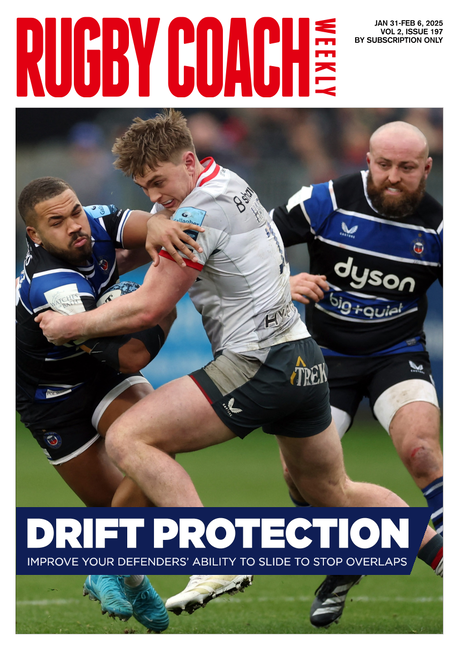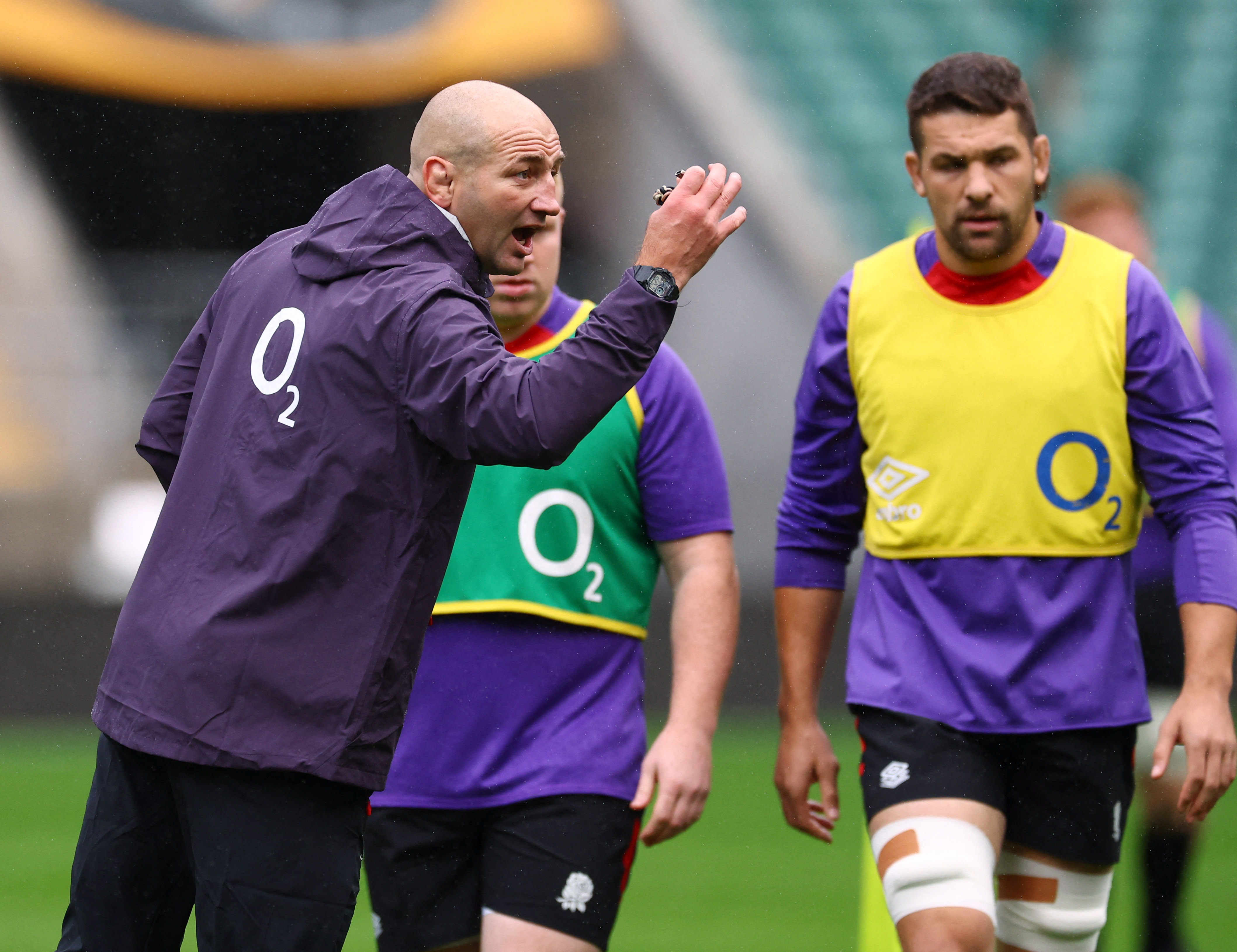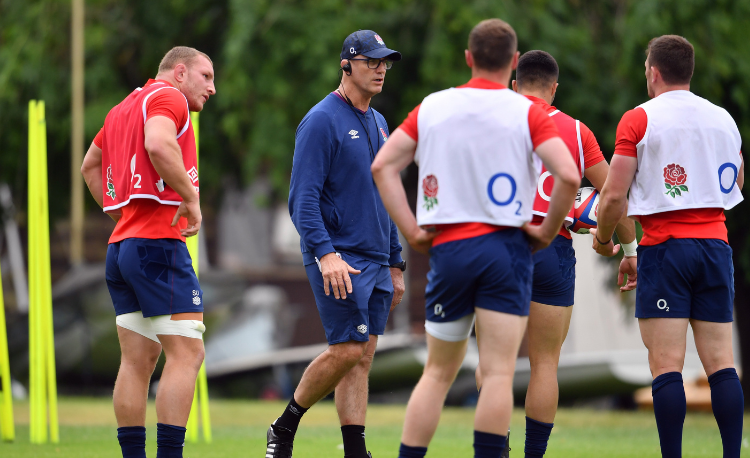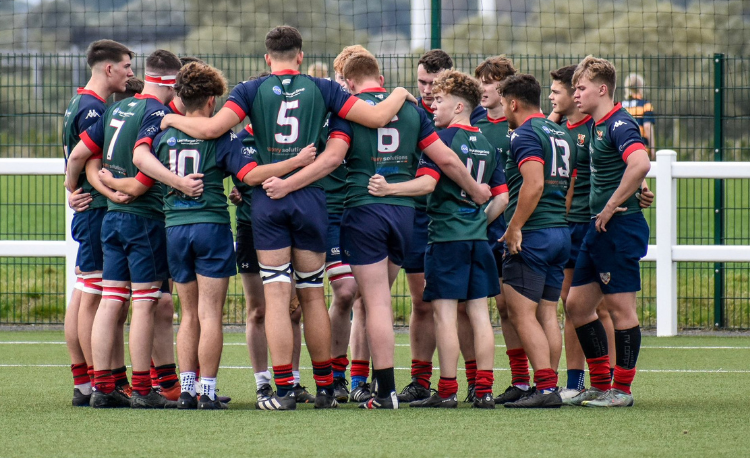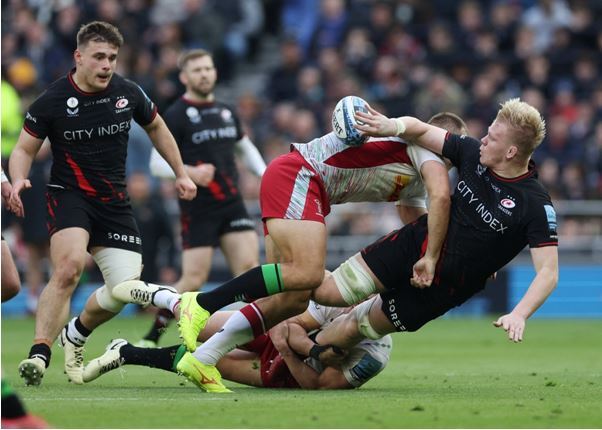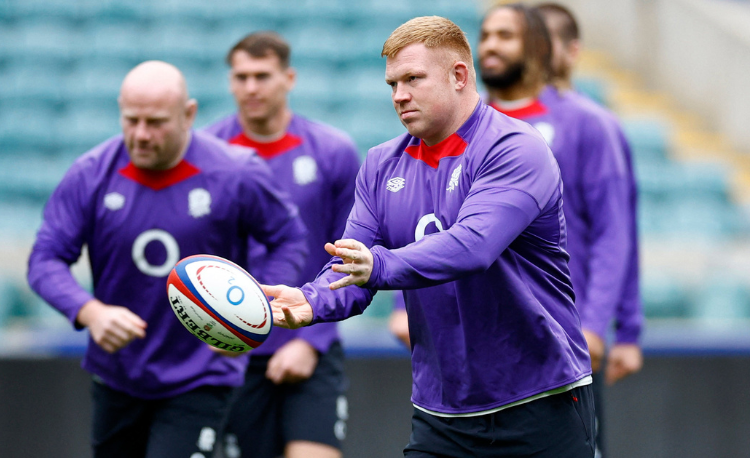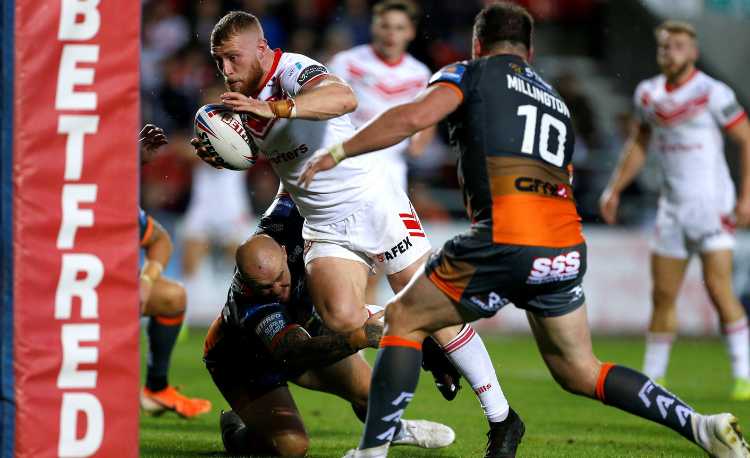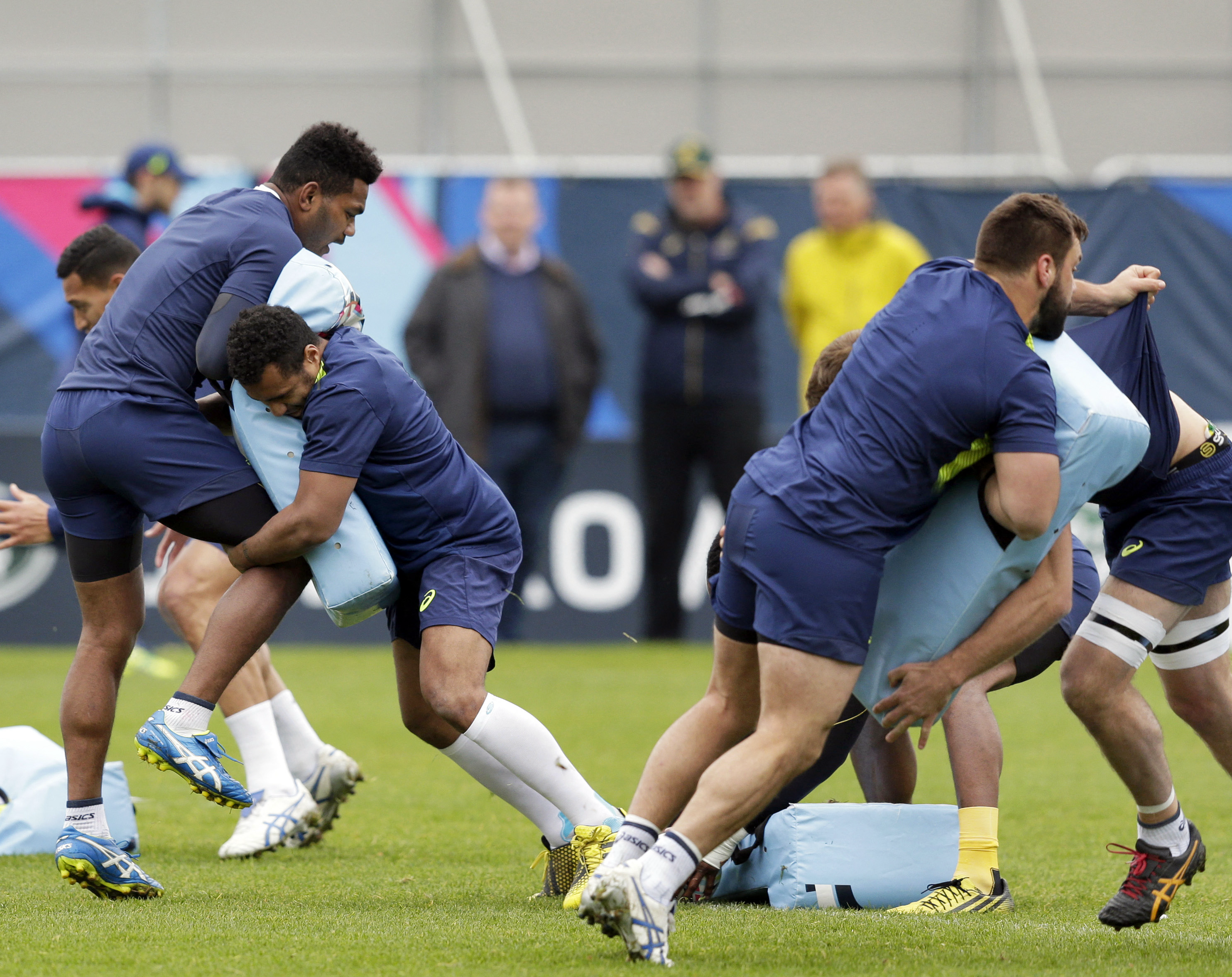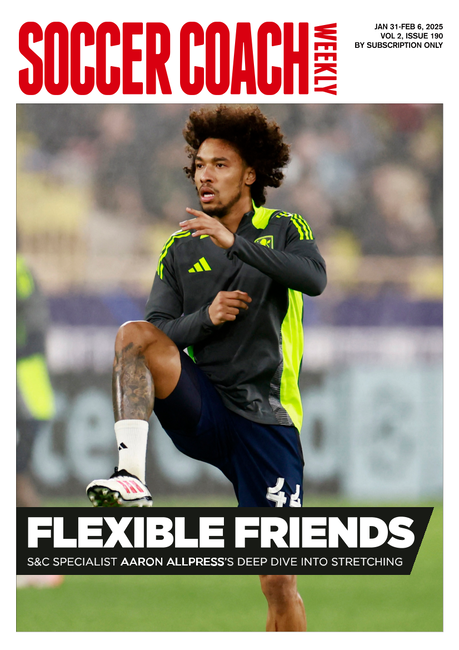Tactics for playing on muddy pitches
The ball is likely to be received slower than normal and from a shorter distance than normal, meaning forwards will be closer to the backs.
The fly half needs to stand closer to the scrum or lineout than normal and not as close to the gain line (see picture below).
The inside centre (12) becomes more like the normal fly half. He acts as the pivot player, if not the decision maker. The fly half concentrates on receiving the ball and passing to the first centre.
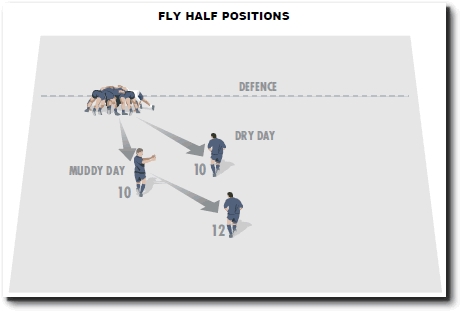
Do not use loop pass moves, because the player who is making the loop will find it difficult to make up the ground.
Runners and dummy runners need to hold the timing of their runs a little longer. A muddy ball will take a little longer to catch and adjust, so the passes will arrive later.
Use switch moves because the defence will find themselves more likely to be flat-footed. The switch runner should run as straight as possible.
Make sure the ball is worked wider quicker, because the ball will definitely be moving faster than the man. To ensure this happens, get the players to stand deeper than they would normally (further from the gain line).
Muddy rugby pitches and scrummaging seemingly go hand in hand. The main problems arise from the stability afforded by the ground.
It seems obvious, but do all your players clean their boots before a scrum? Players need as much traction as possible in the mud, and the boot provides the stability required.
Check the studs before the match – players in the pack should be aiming to maximise the length of their studs. The maximum length of a stud can be 21mm.
Ask the referees if you can move away from particularly muddy patches. In the heat of the game, some referees will not spot the poor ground, but if there is a chance you might be disadvantaged, it might be worth asking for quite justified safety reasons.
Aim for more stability, less shove on your own ball. The flex in the legs needs to be less elastic. In other words, dig in with a straighter leg with the intention of resistance first.
The second row may have to work the ball back, so the left-hand lock will need to be able to use, ideally, their right leg to hook the ball back.
Pressure the opposition with an eight-man shove on their ball as once you get them moving back it is difficult for them to stop you legally.
The hooker could stand with his left leg forward and right leg back before engagement to add extra drive, bringing the right leg forward on the drive.
Most teams would prefer to be in possession but some contend that in muddy conditions it might be better to be without the ball. The pressure is then on the opposition.
They have to make the running, which is difficult if the pitch is slowing them down, and they are more likely to make the mistakes as a consequence with slow ball. You can capitalise on the mistakes.
Play the territory game: kicking to the corners and not running the ball in your half. You might even get to the stage of running the ball only from just outside their 22m.
Try kicking from inside or outside centre behind their back line, to the corners. This should bring the defence up if it is not the fly half kicking, creating more space to kick into.
It doesn’t matter if you concede lineouts as it is difficult for the opposition to create good ball from lineout in these conditions.
Tactics
The fly half needs to stand closer to the scrum or lineout than normal and not as close to the gain line (see picture below).
The inside centre (12) becomes more like the normal fly half. He acts as the pivot player, if not the decision maker. The fly half concentrates on receiving the ball and passing to the first centre.

Do not use loop pass moves, because the player who is making the loop will find it difficult to make up the ground.
Runners and dummy runners need to hold the timing of their runs a little longer. A muddy ball will take a little longer to catch and adjust, so the passes will arrive later.
Use switch moves because the defence will find themselves more likely to be flat-footed. The switch runner should run as straight as possible.
Make sure the ball is worked wider quicker, because the ball will definitely be moving faster than the man. To ensure this happens, get the players to stand deeper than they would normally (further from the gain line).
Tactics for scrummaging
Muddy rugby pitches and scrummaging seemingly go hand in hand. The main problems arise from the stability afforded by the ground.
It seems obvious, but do all your players clean their boots before a scrum? Players need as much traction as possible in the mud, and the boot provides the stability required.
Check the studs before the match – players in the pack should be aiming to maximise the length of their studs. The maximum length of a stud can be 21mm.
Ask the referees if you can move away from particularly muddy patches. In the heat of the game, some referees will not spot the poor ground, but if there is a chance you might be disadvantaged, it might be worth asking for quite justified safety reasons.
Aim for more stability, less shove on your own ball. The flex in the legs needs to be less elastic. In other words, dig in with a straighter leg with the intention of resistance first.
The second row may have to work the ball back, so the left-hand lock will need to be able to use, ideally, their right leg to hook the ball back.
Pressure the opposition with an eight-man shove on their ball as once you get them moving back it is difficult for them to stop you legally.
The hooker could stand with his left leg forward and right leg back before engagement to add extra drive, bringing the right leg forward on the drive.
Sometimes it is best not to have the ball
Most teams would prefer to be in possession but some contend that in muddy conditions it might be better to be without the ball. The pressure is then on the opposition.
They have to make the running, which is difficult if the pitch is slowing them down, and they are more likely to make the mistakes as a consequence with slow ball. You can capitalise on the mistakes.
Play the territory game: kicking to the corners and not running the ball in your half. You might even get to the stage of running the ball only from just outside their 22m.
Try kicking from inside or outside centre behind their back line, to the corners. This should bring the defence up if it is not the fly half kicking, creating more space to kick into.
It doesn’t matter if you concede lineouts as it is difficult for the opposition to create good ball from lineout in these conditions.
Newsletter Sign Up
Coaches Testimonials

Gerald Kearney, Downtown Las Vegas Soccer Club

Paul Butler, Florida, USA

Rick Shields, Springboro, USA

Tony Green, Pierrefonds Titans, Quebec, Canada
Subscribe Today
Be a more effective, more successful rugby coach
In a recent survey 89% of subscribers said Rugby Coach Weekly makes them more confident, 91% said Rugby Coach Weekly makes them a more effective coach and 93% said Rugby Coach Weekly makes them more inspired.
Get Weekly Inspiration
All the latest techniques and approaches
Rugby Coach Weekly offers proven and easy to use rugby drills, coaching sessions, practice plans, small-sided games, warm-ups, training tips and advice.
We've been at the cutting edge of rugby coaching since we launched in 2005, creating resources for the grassroots youth coach, following best practice from around the world and insights from the professional game.


